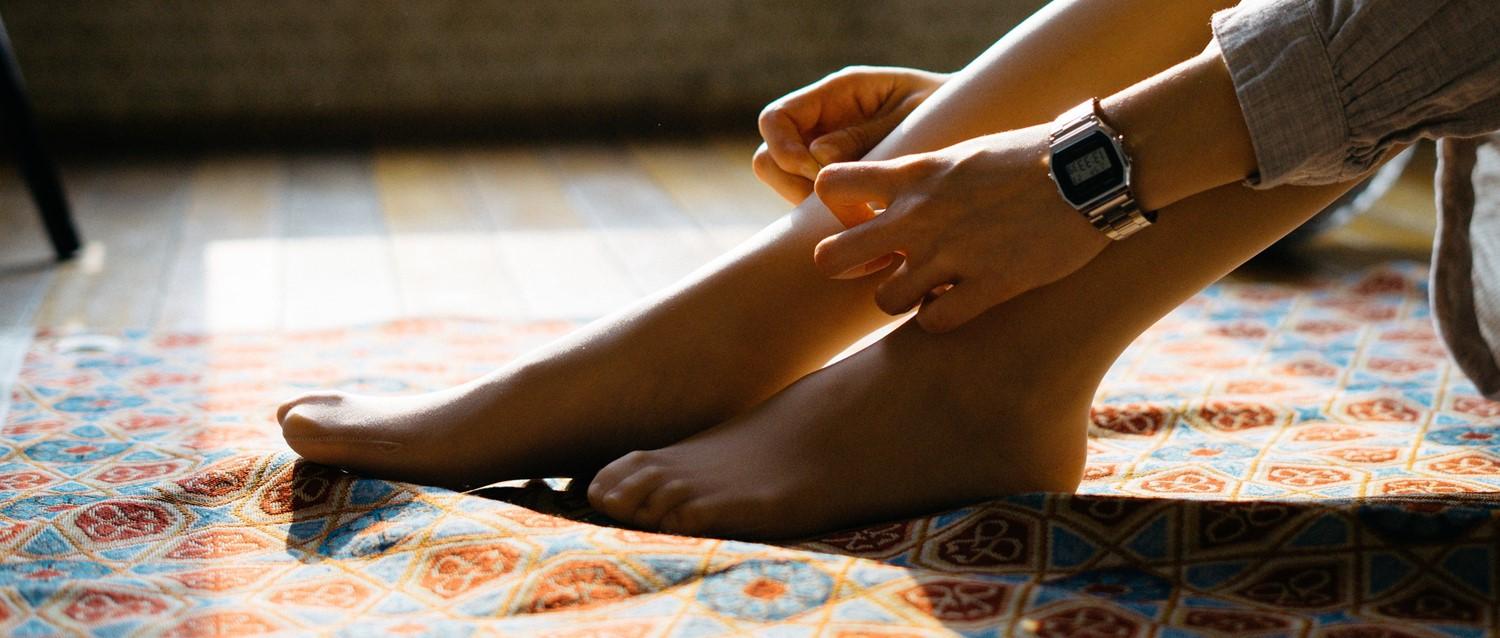
Plantar fasciitis: how to ease pain and find the right treatment
Peer reviewed by Dr Sarah Jarvis MBE, FRCGPLast updated by Gillian HarveyLast updated 20 May 2021
Meets Patient’s editorial guidelines
- DownloadDownload
- Share
- Language
- Discussion
Plantar fasciitis is a common cause of heel pain, caused by inflammation of the tissue at the bottom of your foot. The pain is caused by small tears and inflammation in the plantar fascia (the tissue that supports the arch of your foot). But how can you tell what's causing your heel pain, is there anything you can do to ease the condition at home and when should you seek specialist support?
In this article:
Continue reading below
Symptoms of plantar fasciitis
The main symptom of plantar fasciitis is usually a stabbing pain close to the heel on the bottom of your foot. The pain is often worse in the mornings, and is exacerbated by exercise or long periods of standing. The pain can range from moderate to extreme.
Plantar fasciitis is more common in those aged 40 and over, in those who are overweight or obese, in people who take part in activities that place stress on the heel - including dance and long-distance running - and in those who spend a lot of time on their feet.
On the rise
The drastic change in many people's lifestyle and working habits caused by lockdown and reduced activity over the past year, has led to an increase in foot problems. This is both because those of us spending more time at home may not be wearing supportive footwear, and because many have adopted new exercise regimes which their feet weren't used to.
"During lockdown, those working from home or on furlough may have been wearing flip-flops or house shoes without proper support," says Ruby Kallah, Head of Podiatry at Shuropody. "This has led to an increase in foot problems, something we're referring to as 'furlough foot'."
Continue reading below
Troubleshooting
If you are suffering from foot or heel pain that is mild and doesn’t affect your daily activities too much, it may be that home treatment and self-care will be enough to solve the problem. There are several different exercises you can carry out to relieve inflammation and promote healing from the comfort of your own home.
Cold compress
"Using a cold compress or a bag of peas on the sole of the foot can help to reduce pain and inflammation in the area," says Kallah. Apply the compress 2-3 times a day for 10 minutes or more to benefit.
Foot Pain - Inflammation Control
Stretches
Stretching the underside of the foot can help to relieve tense muscles and improve blood flow in the area and there are several different ways to do this successfully.
Foot Pain - Stretches
Massage
In addition, you could relieve muscle tension on the sole of the foot by using a small ball, such as a tennis ball to massage the area. "Try putting a tennis ball on the floor and rolling it up and down with your foot, and rotating it to stretch muscles," suggests Kallah. "Try doing a few minutes of this stretch this 2-3 times per day."
Footwear
Making sure you're wearing supportive footwear can be very beneficial to those suffering from plantar fasciitis and other forms of foot pain.
"Even around the house, make sure you choose slippers with some support and a strap to keep them in place," says Kallah. Avoid non-supportive options, particularly flip-flops, where the toes play a role in keeping the footwear in place.
Pain relief
While it's important to address and treat the problem, pain relief can be used to alleviate symptoms during the treatment period. Anti-inflammatory painkillers such as ibuprofen may help to relieve the symptoms and pain caused by the condition.
Seeking specialist help
If the pain in your foot is severe, it may be advisable to see a podiatrist or physiotherapist.
"We usually advise patients that if the pain doesn't ease within a couple of weeks, to seek specialist help," says Kallah. "However, if the pain is severe, it's a good idea to come sooner."
What will they do?
"A podiatrist will do an assessment of your injury and ask you questions about your pain," Kallah explains. A physiotherapist will do the same, taking into account various aspects of your lifestyle and health. "They will also be able to provide certainty over the diagnosis and ensure there aren't any other causes or underlying problems."
In order to provide a thorough diagnosis, a podiatrist will look at how you stand and walk, as the position of your legs and feet may be causing undue pressure on different areas. They can tailor treatment specifically for your circumstances and recommend the best course of action.
What treatments might be provided?
"If the pain is fairly mild, a podiatrist might suggest continuing with stretching exercises for longer before moving on to other treatments. However if your pain is severe or hasn't been relieved by stretches, they might recommend you try orthotic insoles which fit in your shoe and help to keep the foot in the correct position." These come ready-made or can be custom-made specifically for your foot.
Other treatments may include 'night splints' that stretch the arch of your foot while you sleep, helping to relieve muscle tension and create more movement in the area. Athletic tape is sometimes used to stabilise the foot and limit movement.
If your symptoms remain severe despite all the measures above, your GP may be able to provide (or refer you for) a steroid injection into your heel.
Foot pain can make everyday movements and activities difficult or impossible to carry out. If you are struggling with pain, even if it's mild, it's a good idea to take steps sooner rather than later.
Patient picks for Foot problems

Foot care
Do your feet get smellier in winter?
Think smelly feet is only a worry during the warmer months? Think again. But if you've noticed an embarrassing odour from your socks and shoes, there are plenty of things you can try.
by Natalie Healey

Foot care
How to find out what's causing your foot pain
Our feet pound the streets every day, carrying all our weight, so it's hardly surprising that sometimes we experience foot pain. So don't fling on any old shoes without a thought - your footwear options could have a high impact on your foot health.
by Dr Sarah Jarvis MBE, FRCGP
Continue reading below
Article history
The information on this page is peer reviewed by qualified clinicians.
20 May 2021 | Latest version

Ask, share, connect.
Browse discussions, ask questions, and share experiences across hundreds of health topics.

Feeling unwell?
Assess your symptoms online for free
Sign up to the Patient newsletter
Your weekly dose of clear, trustworthy health advice - written to help you feel informed, confident and in control.
By subscribing you accept our Privacy Policy. You can unsubscribe at any time. We never sell your data.